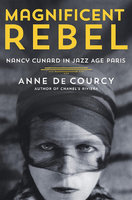New, Quality Gift Books - 50-90% off - over 2500 titles
Your basket is empty.
Categories Entertainment/Showbiz POSING A THREAT: Flappers, Chorus Girls,
POSING A THREAT: Flappers, Chorus Girls,
Book number: 95122
Product format: Paperback
In stock
Bibliophile price
£6.00
Published price
£14.95
Customers who bought this product also bought
|
THEATER OF THE WORLD: The Maps That Made History
Book number: 93966
Product format: Hardback
Bibliophile price
£8.00
Published price
$35
|
MAGNIFICENT REBEL: Nancy Cunard In Jazz Age Paris
Book number: 95106
Product format: Hardback
Bibliophile price
£9.50
Published price
$29.99
|
EARL AND THE PHARAOH
Book number: 95336
Product format: Hardback
Bibliophile price
£7.00
Published price
£20
|
|
ABBEY ROAD
Book number: 95311
Product format: Hardback
Bibliophile price
£8.00
Published price
$29.95
|
GHOSTS OF THE BRITISH MUSEUM
Book number: 95489
Product format: Hardback
Bibliophile price
£7.00
Published price
£20
|
Browse these categories as well: Entertainment/Showbiz, Erotica, Lascivious Lives






